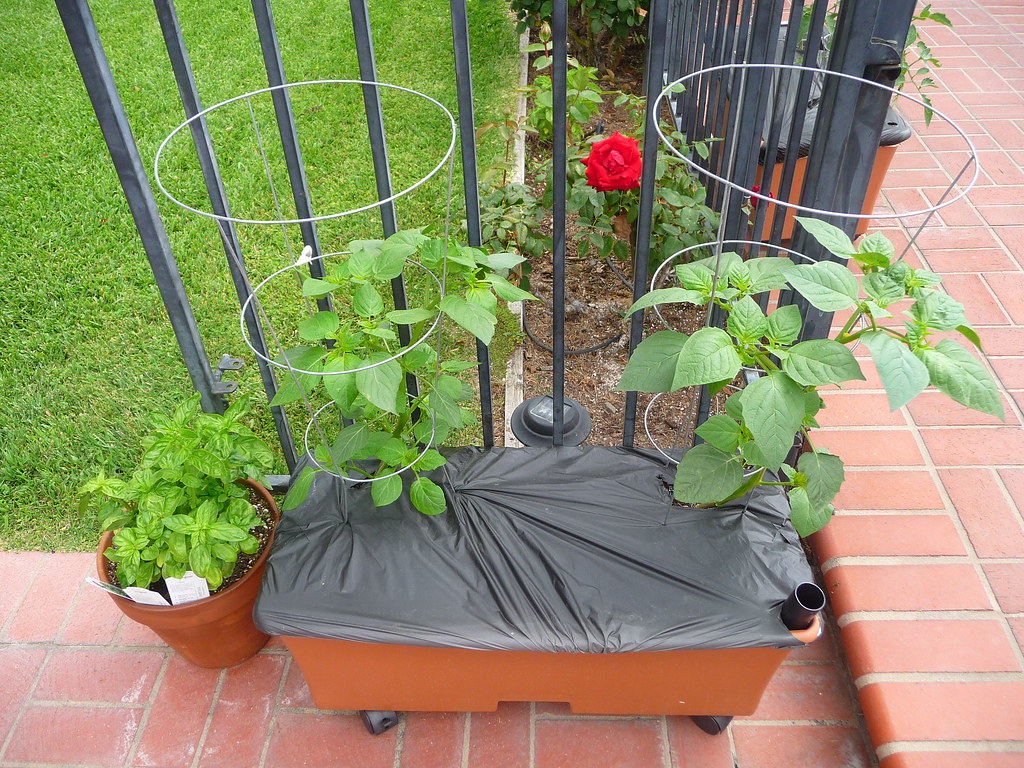Tomatillos have enjoyed a resurgence in recent years due to their ease of care and bountiful harvests. However, if it’s your first time growing them, you may wonder if they need cages like tomatoes do. Tomatoes, even bushy determinate ones, need support, so do tomatillo plants need it as well?
Tomatillos naturally grow as a sprawling plant along the ground, so tomatillo plants need support, although not necessarily cages. Tomato cages, stakes, and trellises are all viable ways to keep your tomatillos off the ground.
On this page:
Do Tomatillos Need Support?
Tomatillos, on average, reach up to 3 feet (approx. 1 meter) in height, although some can get taller, especially during long growing seasons. While you may not think that tomatillos need support, they don’t have woody stems like peppers; rather, tomatillo plants have more flexible stems similar to tomatoes that cause them to flop over, so you should support them.
Fortunately, there is no best way to support your tomatillos, most anything will work, but there are a few support methods which most gardeners use: cages, stakes, or trellises.
Using Tomato Cages for Tomatillo Plants
If you have spare tomato cages, you can use them to support your tomatillo plants. Cages should be 3 to 4 feet tall for standard tomatillo varieties. If you have one of the taller vine-type tomatillo varieties, aim for 5- to 6-foot cages.
Place your cages early in the season before your tomatillo plants gets established to minimize root disturbance and branch damage.
Tomatillos are not climbing plants, so you may need to train your tomatillo plants up their cages as they’re growing if they are flopping over too soon. Carefully rest the branches along the cage where the plant can get support as it grows upward.
Tomatillo plants generally don’t need any additional support with cages. However, if you live in a windy area, you can add extra support by tying branches to the cages as your tomatillos mature. It’s recommended to use twine, garden tape, or reusable zip ties to tie up your plants. I usually use butcher’s twine or reusable zip ties.
Verdict: If you have tomato cages, use them, but I wouldn’t buy them specifically for tomatillos.
Staking Tomatillo Plants
Staking is the preferred method for a lot of gardeners due to its simplicity. You don’t even need to buy garden stakes if you have spare boards or fence posts that can be split into stakes, long wooden handles from broken tools, straight branches pruned off trees, or even dried sunflower stalks from the previous year. If you have them, you can also use metal posts as stakes.
Stakes for tomatillos should be anywhere from 4 to 5 feet tall. Save your taller stakes for indeterminate tomatoes.
Because stakes can damage roots, it’s good to place stakes early, but if it’s late in the season, you can still use them. Place stakes 3 to 5 inches away from your tomatillos, and drive them at least 1 foot deep to ensure they’re stable.
Just as with cages, use something like twine, garden tape, or reusable zip ties to support tomatillos as they’re growing.
Verdict: The first choice for tomatillo plants because stakes are cheap to buy, easy to DIY, and save storage space in your shed or garage in winter.
Growing Tomatillo on a Trellis
Because tomatillos don’t climb naturally, a trellis is the least practical option to support tomatillos, but if you already have a trellis, you can use it. This method works best for a long row of several tomatillo plants rather than a few of them. Another benefit is that trellises are more versatile and can be used for many other vegetables.
Treat a trellis the same way you would treat a cage: make sure it’s at least 3 feet tall and, if it’s not a permanent trellis, place it soon after transplanting your tomatillos outdoors. Tie your tomatillo plants to the trellis for support.
Verdict: Just as effective as cages but works best if you are growing a lot of tomatillo plants. Trellises are also more versatile in the garden (trellises can be used for all sorts of vegetables and flowers).
Examples of DIY Tomatillo Support Ideas
Staking with things around the house, like spare wood, long and straight branches, or old sunflower stalks
Making a trellis out of wire cattle panels and wooden or stainless steel posts
Making a support cage out of chicken wire tied or stapled to wooden stakes
Using deck railings or existing fences as supports by planting your tomatillos along them and tying them with twine or reusable zip ties
Related Questions About Supporting Tomatillo Plants
Will Rusty Cages Harm Tomatillo Plants?
No. While rust isn’t good for your cages, rust is simply oxidized iron. Unlike heavy metals, which are harmful, iron is actually a trace nutrient for plants.
Can You Reuse Tomatillo Stakes?
Yes. Wooden stakes will last at least a few years, although the bottom will begin to show rot damage after the first year. To get a couple extra years out of your wooden stakes, take them out at the end of the season and store them in a shed or garage during winter. Stainless steel posts will likely outlast you.
Pro-Tip: Don’t throw away stakes with completely rotten bottoms; they can be used to stake up shorter plants or reused around the garden in other ways.



